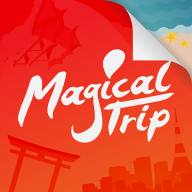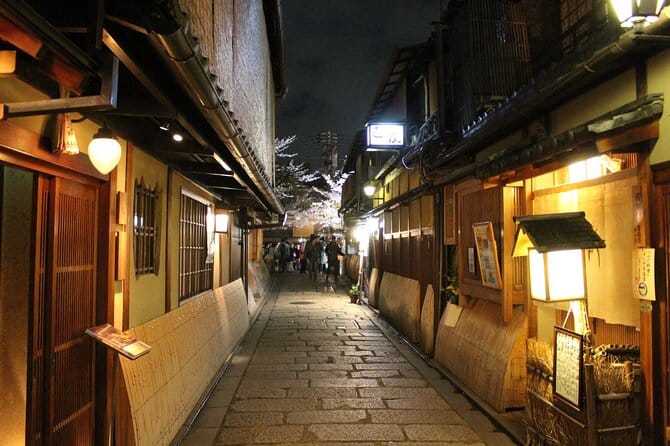Kyoto has become a top tourist destination in Japan, captivating travelers from around the world. With over 1,200 years of history, this ancient capital is home to temples and shrines registered as World Heritage sites, beautiful gardens, and traditional architecture, encapsulating the essence of Japanese culture.
When visiting Kyoto, you naturally want to make the most of its charm. However, for first-time visitors, it can be overwhelming to know where to start.
Kyoto boasts 17 UNESCO World Heritage sites alone, and faced with countless attractions, you might feel at a loss about how to efficiently tour them all.
That's why in this article, I, having lived in Kyoto and traveled to various areas, will propose four model courses to fully enjoy Kyoto in one day. I've prepared itineraries tailored to different purposes: "For Kyoto first-timers," "For in-depth historical exploration," "For enjoying nature," and "For food enthusiasts." Even repeat visitors are sure to find new discoveries.
Beyond just providing example model courses, this article is packed with useful tips that are the golden rules of Kyoto sightseeing, such as "Pay attention to temple opening hours" and "Walking is often faster than expected."
I've also included plenty of insider knowledge gained locally, like information on hidden gem restaurants in tourist areas.
Kyoto means different things to different people. Why not use this article as a reference to find your own way of enjoying Kyoto?
This article proposes four model courses tailored to your interests. If you want to read about a specific course first, please jump from the table of contents below.
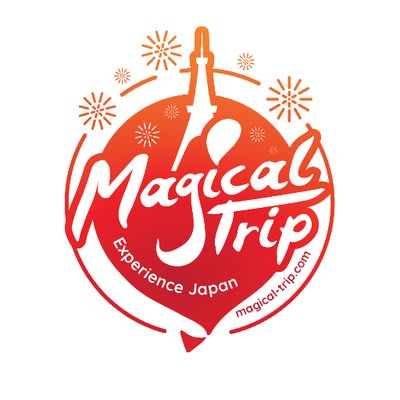
If you are looking for Comprehensive Kyoto Guide, check the article below! I summarized how and where you can enjoy different areas of Kyoto as much as possible.
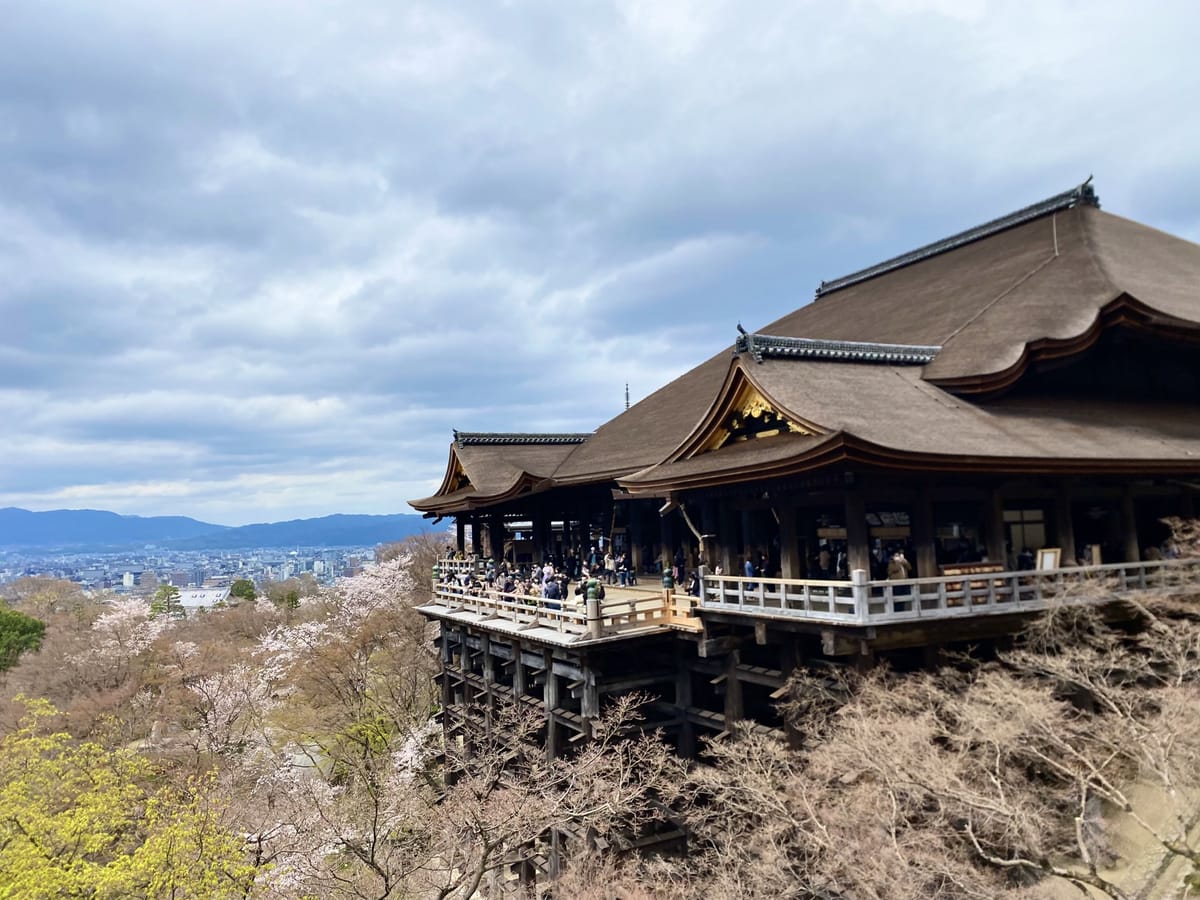
Table of Contents
・What Kind of Place is Kyoto?
・Tips for a One Day Trip in Kyoto
・Model Course 1: One Day Trip for First-time Visitors to Kyoto
・Model Course 2: One Day Trip for Repeat Visitors to Explore Kyoto's History More Deeply
・Model Course 3: One Day Trip to Enjoy Kyoto's Nature
・Model Course 4: One Day Trip to Indulge in Kyoto's Tea and Food
・Other Places You Can Visit on a Day Trip from Kyoto City
・Recommended Tours to Fully Enjoy Kyoto
What Kind of Place is Kyoto?
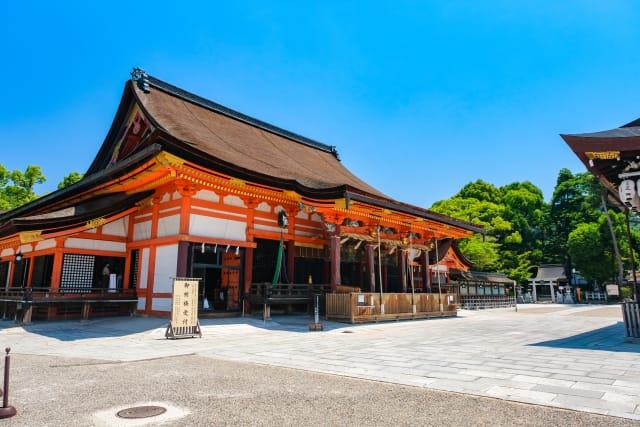
Kyoto is an ancient capital with a thousand years of history and is also the center of traditional Japanese culture and art. It's highly popular not only domestically but also internationally, known particularly as a treasure trove of temples and shrines registered as UNESCO World Heritage sites, including Kiyomizu-dera, Kinkaku-ji, and Fushimi Inari Shrine.
When I lived in Kyoto, what impressed me the most was the beautiful scenery changing with the seasons. Cherry blossoms in spring, fresh greenery in summer, and autumn foliage all enhance the cityscape of the ancient capital.
Kyoto is also famous as the birthplace of Japanese cuisine, with various food cultures rooted there, from temple vegetarian cuisine to kaiseki cuisine that developed from tea culture.
On the other hand, in recent years, the rapid increase in tourists due to the global Kyoto boom has become a concern. To avoid crowds, I recommend planning your Kyoto tour systematically, referring to the golden rules of sightseeing and model courses introduced in this article.
Tips for a One Day Trip in Kyoto
In this section, I'll introduce five points for comfortably enjoying your Kyoto trip.
Pay Attention to Temple and Shrine Hours
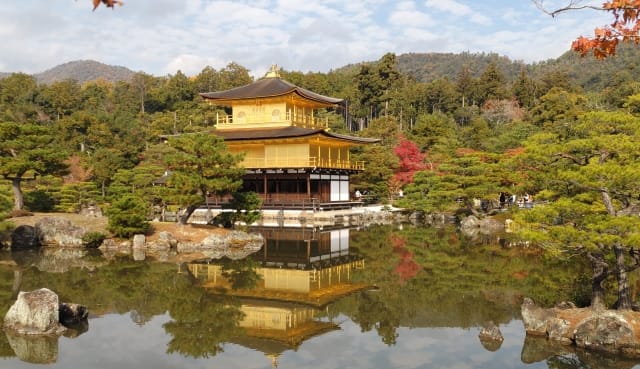
An essential part of Kyoto sightseeing is visiting the numerous temples and shrines. However, many temples are open from early morning until around 5:00 PM, so you need to pay close attention to your schedule.
While there are exceptions, to fully enjoy Kyoto's temples, it's best to start your activities as early in the morning as possible. I remember once lining up before opening time to enjoy the morning scenery of Kiyomizu-dera.
In these model courses, we've set the start of the day at popular temples. While getting up early might be tough, it will make your stay in Kyoto that much more wonderful.
Sometimes It's Faster to Walk to Your Destination
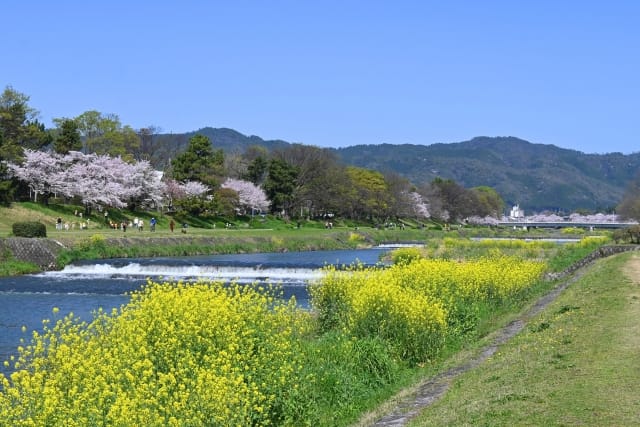
The main means of transportation within Kyoto city are trains and buses, but surprisingly, walking can sometimes be faster. For example, I often walked from Kawaramachi/Gion to Kiyomizu-dera when I was a student. It was smoother to arrive on foot than by taking the bus.
Similarly, when going from Kyoto Imperial Palace to Heian Shrine, if you look up the bus route, it will come up, but considering transfers and waiting times, it's smoother to walk for about 20 minutes. I recommend walking while enjoying the Kyoto townscape, creating memorable paths.
However, don't forget to wear comfortable shoes for sightseeing to avoid getting tired from walking. I remember using my commuting sneakers for temple visits during my student days.
Is Using Local Buses Risky?
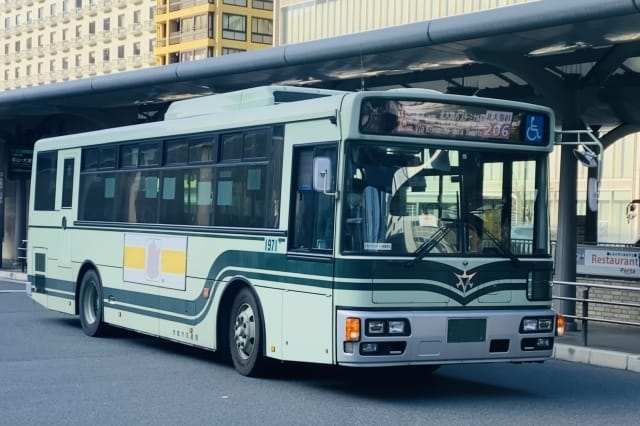
Local buses are indispensable for getting around Kyoto city, but as I explained earlier, walking can sometimes be faster and easier depending on the situation. Especially during peak tourist seasons, there can be long queues.
Over-tourism has become an issue in Kyoto, and the overcrowding of buses is a problem. Honestly, you might get tired just from being jostled in a packed bus.
Therefore, it's wise to use buses sparingly and utilize them only when there's no other transportation option and it's a bit too far to walk.
If You're Visiting the Gion Area or Kyoto Station, Evening to Night is Recommended
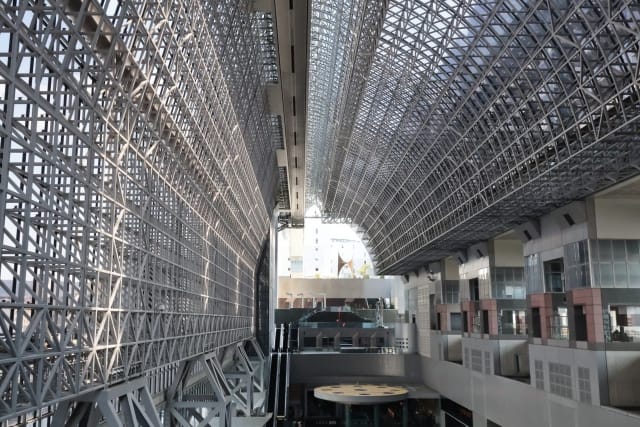
The representative gourmet areas of Kyoto are Gion and the area around Kyoto Station. They're packed with delicious local specialties and souvenirs. My personal favorite is "Pontocho" in Gion. The appearance of the restaurants lined up along the stone-paved alleys is truly unique to Kyoto.
Considering that many temples and shrines close in the evening, it's recommended to fully enjoy the historical spots first and then visit places like Gion or Kyoto Station that are lively even at night.
After dark, you can enjoy dinner while admiring the atmospheric townscape illuminated by lanterns. The restaurant floor of Kyoto Station Building also becomes less crowded at night compared to lunchtime, making it a good target.
Dress According to the Season
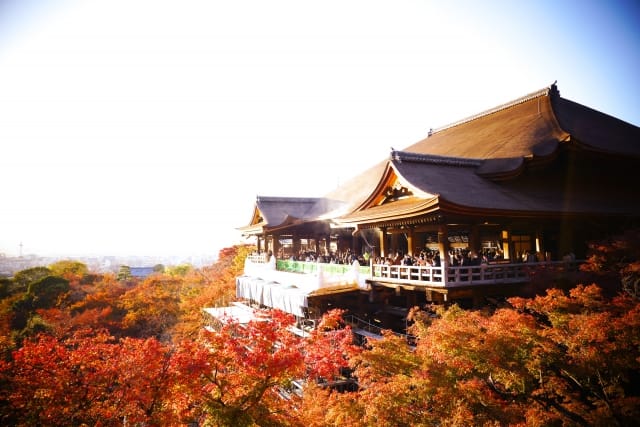
Kyoto is in a basin, so it's scorching hot in summer and bitterly cold in winter. Spring and autumn can have warm days, but the morning and evening chill can't be underestimated.
Also, when sightseeing all day, the walking distance can be considerable. You might even break a sweat just climbing the stairs of temples and shrines.
Therefore, choosing clothes suitable for the season is important for your Kyoto trip. Furthermore, if you tuck a folding umbrella and a change of clothes into your backpack, you won't be caught off guard by sudden weather changes.
If you are interested in four seasons in Kyoto, check the article below! I summarized how and where you can enjoy four seasons in Kyoto as much as possible.
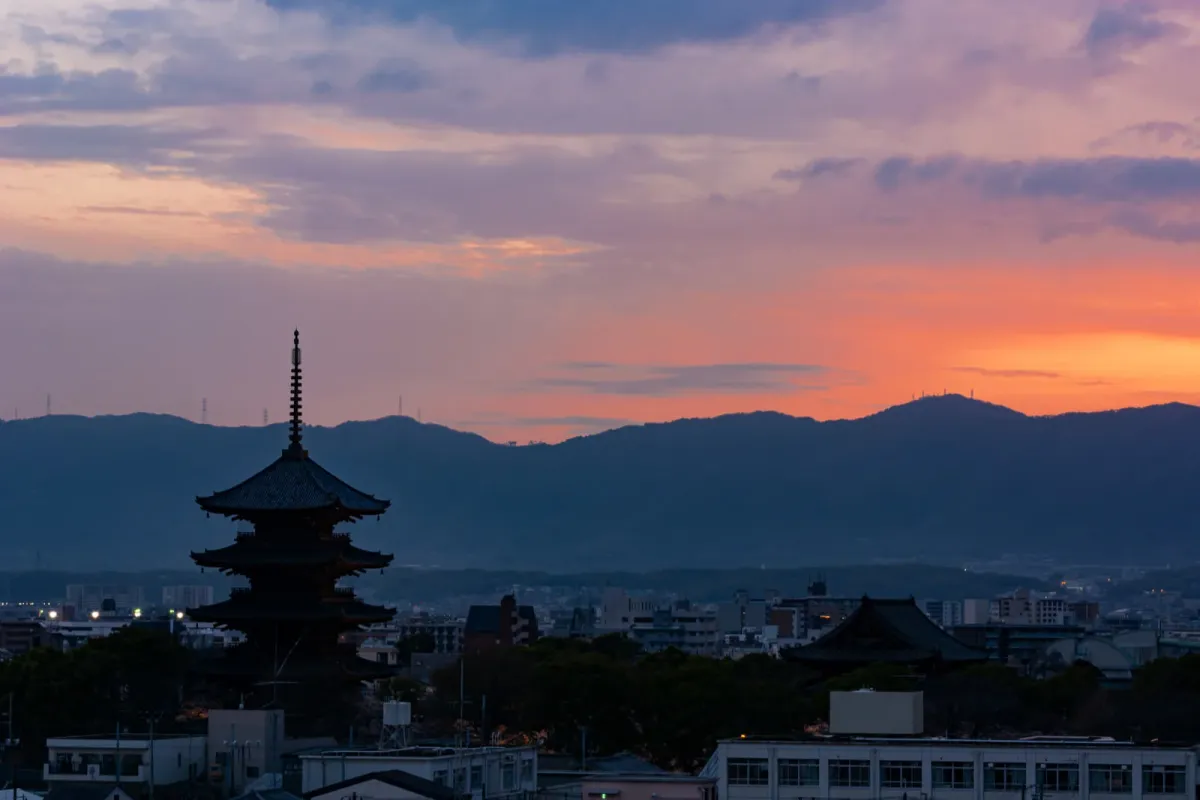
Model Course 1: One Day Trip for First-time Visitors to Kyoto
Here, I'll introduce four model courses for a one-day trip in Kyoto. Let's start with a course recommended for first-time visitors to Kyoto.
Course Overview
・Kyoto Station or your accommodation → Kiyomizu-dera → Lunch → Sanjusangendo → Fushimi Inari Shrine → Kyoto Station → Your accommodation
・Duration: About 7 hours
・Transportation: Train, on foot
・Recommended season: All year round
This course is designed so that even first-time visitors to Kyoto can comfortably cover it. Starting from the World Heritage site Kiyomizu-dera, followed by lunch, the national treasure Sanjusangendo, and the photogenic Fushimi Inari Shrine, it condenses the charm of Kyoto. You can also enjoy meals and souvenir shopping around Kyoto Station, making it a highly satisfying route.
Course Details
Visit Kiyomizu-dera Temple in the Morning
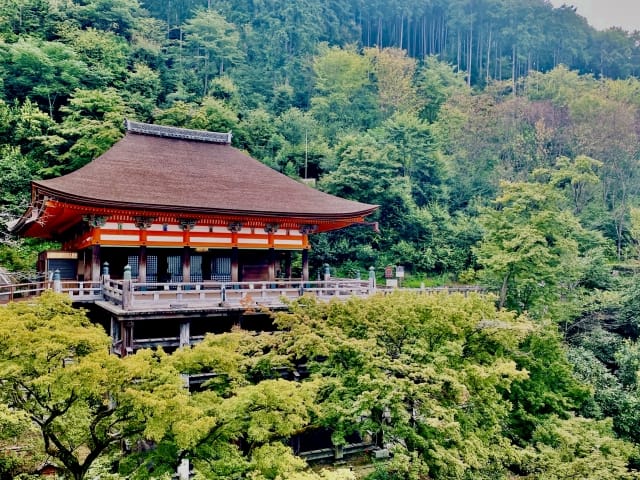
First, let's head to "Kiyomizu-dera Temple," the symbol of Kyoto that everyone thinks of. Aim to arrive by 10:00 AM. The grand panorama from the stage is breathtaking.
While you might think the first thing in the morning is best for photogenic spots, recently Kyoto is crowded even in the early morning. Kiyomizu-dera opens from 6:00 AM, but there's no need to go that early.
It's also fun to peek into the shops along the approach, making it a suitable place for the first step of your Kyoto exploration.
Website: https://www.kiyomizudera.or.jp/en/
If you are interested in Kiyomizu-dera Temple, check the article below! I summarized in more details and how I felt there.
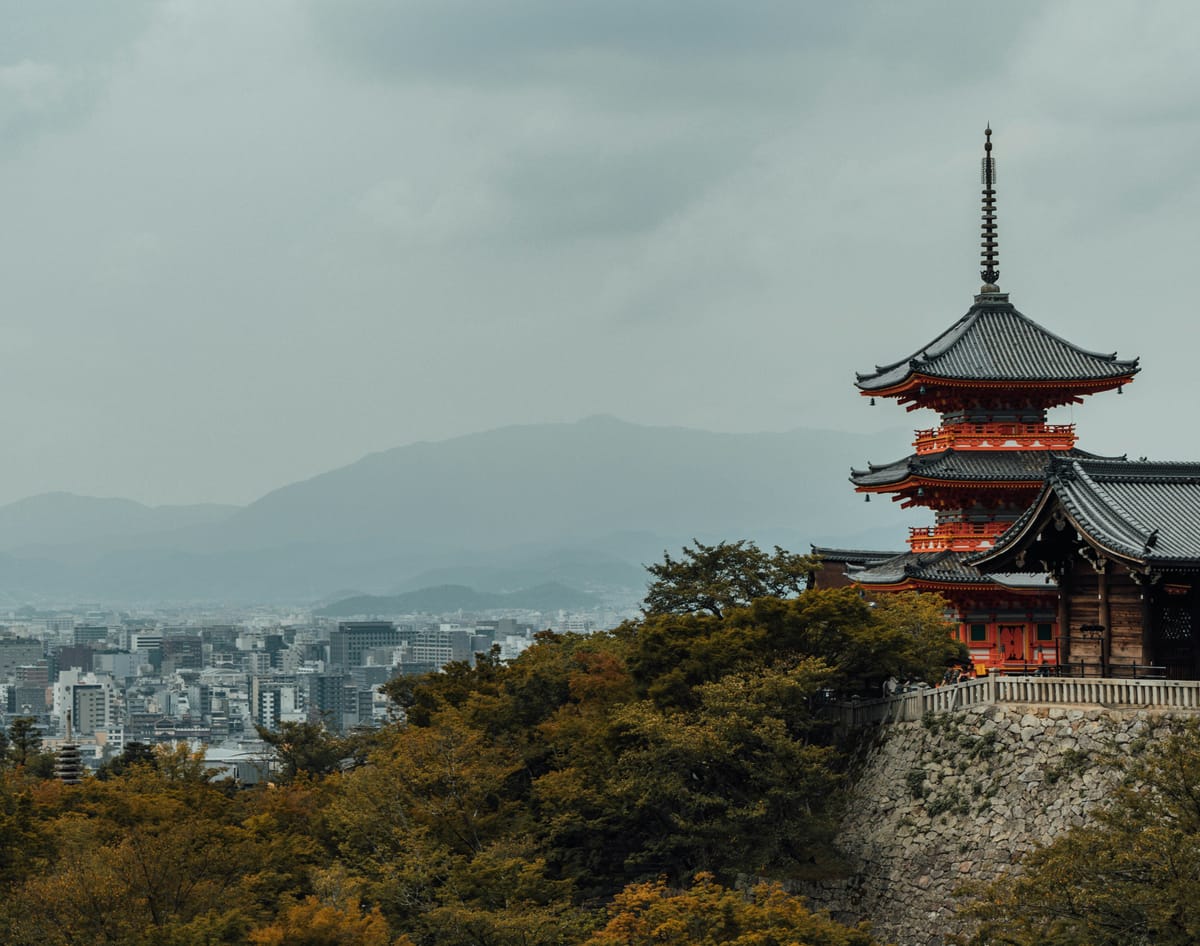
Enjoy Lunch Around Kiyomizu-dera

The area around the approach to Kiyomizu-dera is lined with dining establishments. There's a rich variety of Kyoto-style Japanese menu items.
・Recommended Restaurant 1: Ukiya
This is a restaurant in the Kiyomizu-dera area where you can enjoy traditional cuisine, soba, and tempura sets. No reservation is needed, making it easy to enter, and prices start from 1,000-2,000 yen per person, which is a good deal for a tourist area.
<Store Information>
Address: 3 Chome-334 Kiyomizu, Higashiyama Ward, Kyoto, 605-0862
Closed: Mondays
Phone: 075-532-0678
Hours: 11:00 AM–4:00 PM
Website: https://www.ukiya.co.jp/
・Recommended Restaurant 2: Japanese Noodle ISSUN BOUSHI
This is a popular ramen shop in the Kiyomizu-dera area. They have a wide lineup from simple ramen to luxurious and creative ramen packed with Kyoto ingredients. You can enjoy it on a budget of 1,000-1,500 yen per person.
<Store Information>
Address: 4 Chome-148-6 Kiyomizu, Higashiyama Ward, Kyoto 605-0862
Closed: None
Phone: 075-741-8070
Hours: 11:00 AM–7:00 PM
Website: https://tabelog.com/en/kyoto/A2601/A260301/26037206/
Walk to Sanjusangendo
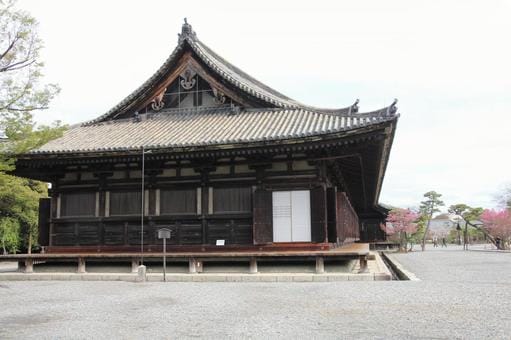
About a 20-minute walk from Kiyomizu-dera is "Sanjusangendo," known as the world's longest wooden structure. Here, 1001 Buddhist statues are enshrined. The sheer scale is sure to take your breath away.
Website: https://www.sanjusangendo.jp/en/
If you are interested in Sanjusangendo, check the article below! I summarized in more details and how I felt there.
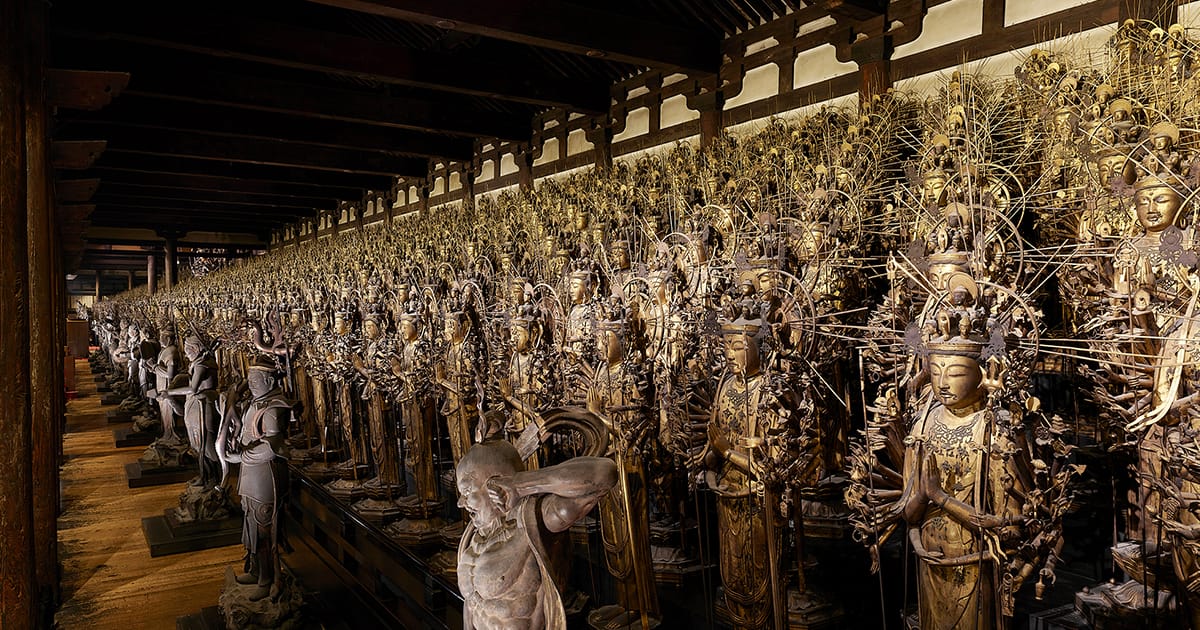
Take the Keihan Train to Fushimi Inari Shrine
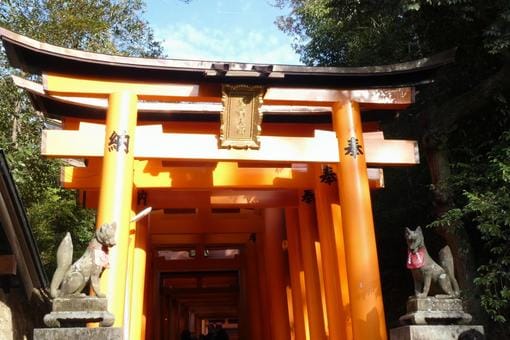
Walk for about 10 minutes from Sanjusangendo to Keihan Shichijo Station, then take the train to head towards Fushimi Inari Shrine. The tunnel of thousands of vermilion torii gates is a scenic spot that could be called a symbol of Kyoto. It's also very popular among overseas tourists.
However, Fushimi Inari Shrine is a sacred place that enshrines Inari. There are also many people coming to worship.
Be careful not to disturb others around you while being absorbed in taking photos.
Website: https://inari.jp/en/
If you want to thoroughly enjoy Fushimi Inari, check out the "Fushimi Inari Hidden Hiking Tour."
Click here for more details: Fushimi Inari Hidden Hiking Tour
Enjoy Kyoto Station
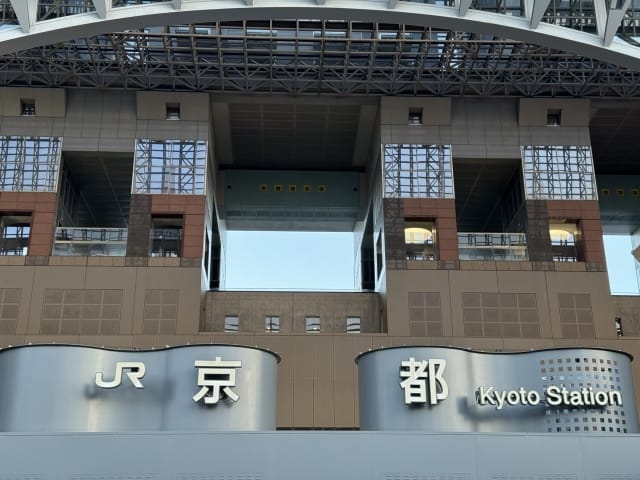
Kyoto Station is not just a station building. It's packed with attractions, including "Omiyage Koji" where Kyoto souvenirs are gathered, and a food zone lined with restaurants and cafes.
Especially noteworthy is "Kyoto Ramen Koji" on the 10th floor. It's a gathering of super famous ramen shops from Kyoto. During my student days, I often came here to compare different ramen. If you finish your day at Kyoto Station, it's sure to blow away the fatigue from sightseeing.
Website: https://www.kyoto-ramen-koji.com/english/index.html
If you are interested in Kyoto Station, check the article below! I summarized how and where you can enjoy Kyoto Station as much as possible.
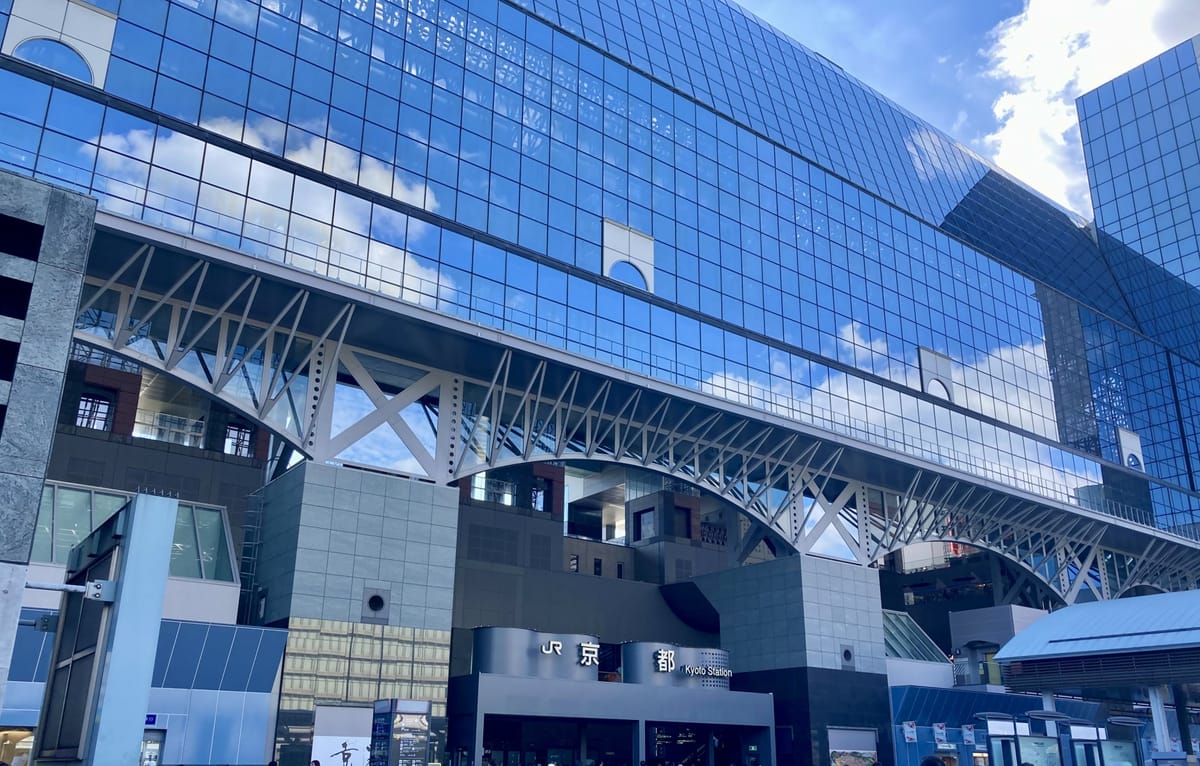
Model Course 2: One Day Trip for Repeat Visitors to Explore Kyoto's History More Deeply
This is a recommended course for those who have been to Kyoto once and want to learn more about its history. If you're staying in Kyoto for a few days, I recommend enjoying this course after Model Course 1.
Course Overview
・Kyoto Station → Kinkaku-ji → Kitano Tenmangu → Nijo Castle → Kyoto Imperial Palace → Heian Shrine → Kyoto Station → Your accommodation
・Duration: About 9 hours
・Transportation: Train, bus, on foot
・Recommended season: Spring (cherry blossoms), autumn (autumn foliage)
This course covers World Heritage sites and historical buildings representative of Kyoto, such as Kinkaku-ji and Nijo Castle.
Especially in spring with cherry blossoms and autumn with fall foliage, it's not to be missed. The colorful seasonal attire further enhances the charm of Kyoto. I often went out to enjoy the scenery of the ancient capital during my graduate school days.
As it's a route centered on walking, it requires some stamina. Please enjoy it with comfortable shoes.
Course Details
Take a Bus to the Golden Temple "Kinkaku-ji Temple"
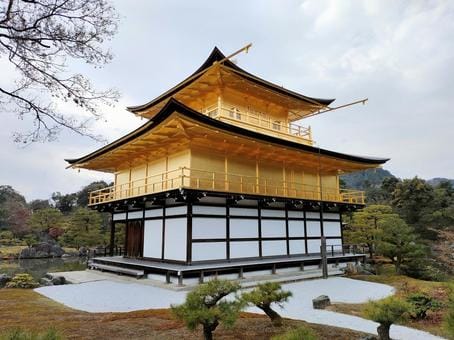
"Kinkaku-ji Temple," with its breathtaking golden exterior, is officially named "Rokuon-ji" and was built in 1397. It's easily accessible from Kyoto Station or Kawaramachi Station by taking City Bus 205 and getting off at "Kinkakuji-michi" stop. With its great accessibility, Kinkaku-ji is a quintessential spot for Kyoto sightseeing.
My favorite part of Kinkaku-ji is the "inverted Kinkaku-ji" reflected in Kyoko-chi pond. On a clear day, the golden reflection shimmers on the water surface, creating an illusion of two golden pavilions. It's a heart-cleansing beauty.
Website: https://www.shokoku-ji.jp/en/kinkakuji/
If you are interested in Kinkaku-ji Temple, check the article below! I summarized in more details and how I felt there.
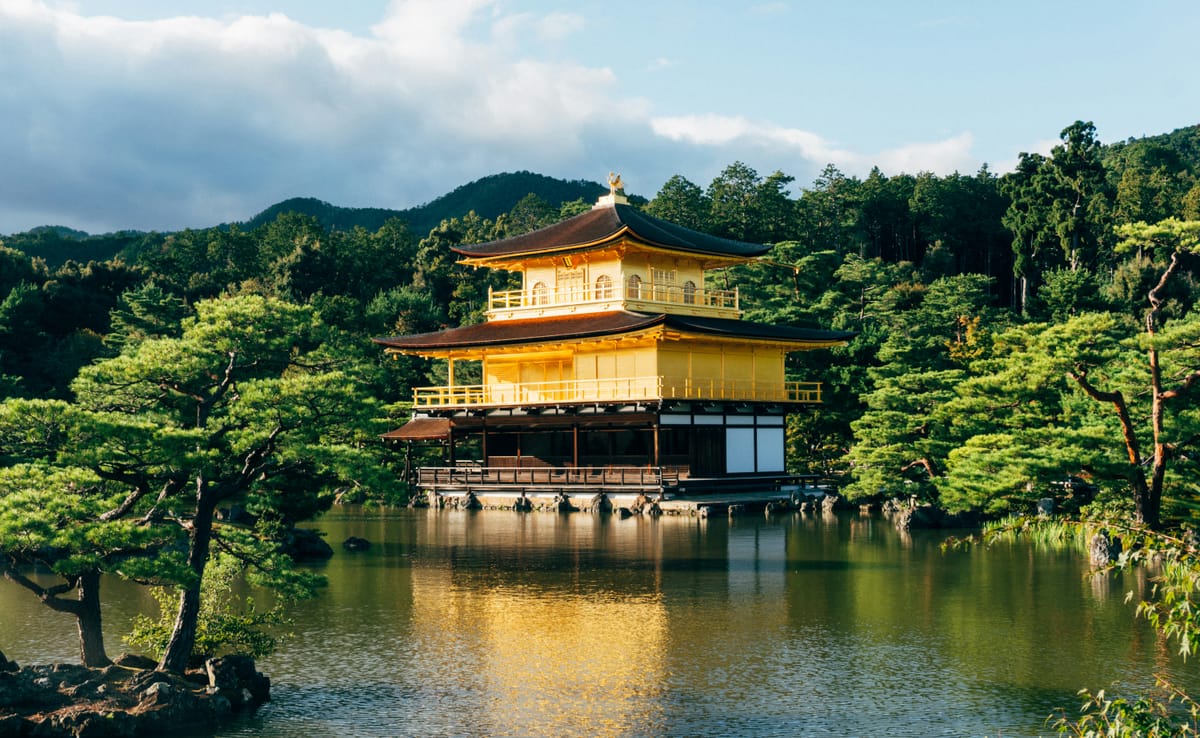
Walk to Kitano Tenmangu
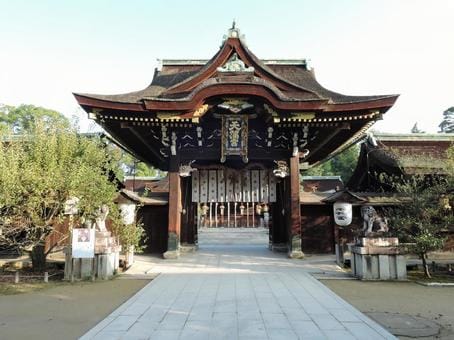
About a 15-minute walk north from Kinkaku-ji is our next destination, "Kitano Tenmangu," known as the deity of academics. Originally founded in 898 during the Heian period, it's a shrine with a long history.
The ema hall just past the tower gate is overflowing with ema plaques praying for academic success during exam season.
While the shrine is particularly famous for its plum blossoms in spring, the impressive and majestic buildings are worth seeing any time of the year.
Website: https://kitanotenmangu.or.jp/en/
Enjoy the Majestic Nijo Castle and Lunch

Nijo Castle, built in the Edo period, was registered as a World Cultural Heritage site in 1994. Within the castle grounds, there are splendid buildings decorated with gorgeous wall paintings and sculptures, including the national treasure Ninomaru Palace. It's one of Kyoto's finest attractions.
Website: https://nijo-jocastle.city.kyoto.lg.jp/?lang=en
If you are interested in Nijo Castle, check the article below! I summarized in more details and how I felt there.
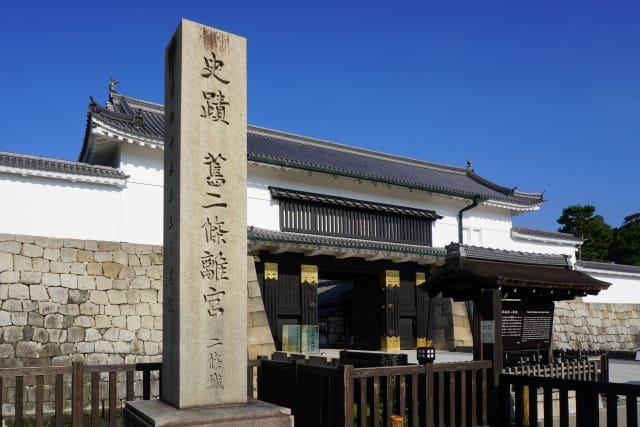
After enjoying a stroll around the castle, visit one of the attractive lunch spots in the neighborhood of Nijo Castle.
・Recommended Restaurant 1: Rojioku Garden 168
"Rojioku Garden 168," where you can taste Kyoto's obanzai (traditional side dishes), is my favorite restaurant in this area. It's reasonably priced yet substantial. The budget per person is 1,500 yen.
<Store Information>
Address: Marumasu Nishimuraya, Rojioku, 448 Tsuboyacho, Nakagyo Ward, Kyoto 604-8276
Closed: Tuesdays
Phone: 075-251-1010
Hours (Sundays to Thursdays): 11:30 AM–3:00 PM, 6:00 PM–11:00 PM
Hours (Fridays to Saturdays):11:30 AM–3:00 PM, 6:00 PM–12:00 AM
Website: https://tabelog.com/en/kyoto/A2601/A260203/26028714/
・Recommended Restaurant 2: Kissaten Tyrol
"Kissaten Tyrol" is a spot where you can experience Kyoto's unique cafe culture. You can enjoy Napolitan spaghetti or omurice in a retro interior. It's also nice that most menu items are under 1,000 yen.
<Store Information>
Address: 539-3 Monzencho, Nakagyo Ward, Kyoto, 604-8306
Closed: Sundays
Phone: 075-821-3031
Hours: 8:00 AM–4:00 PM
Website: http://tyrol.favy.jp/
Explore the Vast Kyoto Imperial Palace and Heian Shrine
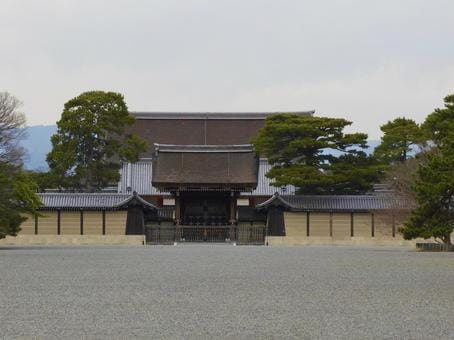
Kyoto Imperial Palace was the residence of emperors from the Heian period to the Edo period. As it was once the living place of emperors, its grounds are vast. In spring, plum and cherry blossoms bloom profusely, turning it into a scenic spot.
I still remember the beauty when I visited Kyoto Imperial Palace during the cherry blossom season as a student.
Website: https://sankan.kunaicho.go.jp/english/index.html
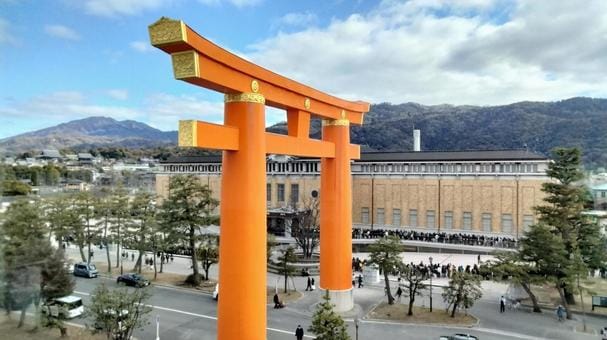
Just a short walk from Kyoto Imperial Palace is Heian Shrine. It's a relatively new shrine built in 1895 to commemorate the 1100th anniversary of the capital's relocation to Heian-kyo (present-day Kyoto).
The stylish vermilion-painted great torii gate is a landmark, behind which spreads a beautiful garden. The autumn foliage that fills the precincts in fall is spectacular. Why not take a stroll around?
Website: https://www.heianjingu.or.jp/language/english.html
Explore Kyoto Station
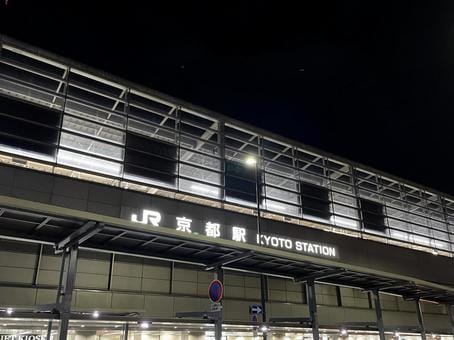
Finally, return to Kyoto Station to enjoy shopping and dinner. The Ramen Street I introduced in Model Course 1 is particularly popular, but there are many other restaurants, so I recommend deciding while exploring.
Website: https://www.kyoto-ramen-koji.com/english/index.html
Model Course 3: One Day Trip to Enjoy Kyoto's Nature
In addition to historical spots like temples and shrines, Kyoto is also rich in nature. This model course allows you to fully enjoy Kyoto's natural beauty.
Course Overview
・Kawaramachi Station or Osaka Umeda Station → Arashiyama → Lunch → Tenryu-ji → Bamboo Grove → Arashiyama Monkey Park Iwatayama → Kawaramachi Station (Gion) → Your accommodation
・Duration: About 8 hours
・Transportation: Train, bus, on foot
・Recommended season: Summer, spring (cherry blossoms), autumn (autumn foliage)
To enjoy Kyoto's nature, I recommend the Arashiyama area. It's an area packed with attractions including Togetsukyo Bridge and the bamboo grove.
While Arashiyama shows different expressions in each season, the cherry blossoms in spring, fresh greenery in summer, and autumn foliage are exceptional. If you want to be healed by nature, why not visit during these seasons? However, the scenery is not so great in winter.
When I was a graduate student, I often visited Arashiyama with friends. I remember discussing our future while walking through the bamboo grove. Kyoto's nature is deeply connected with such youthful memories.
If you want to make effective use of your time, I recommend our Magical Trip's "Kyoto Arashiyama Bamboo Forest & Garden Half-Day Walking Tour."
Click here for more details: Kyoto Arashiyama Bamboo Forest & Garden Half-Day Walking Tour
Course Details
Take the Hankyu Train to Arashiyama: Enjoy an Early Lunch
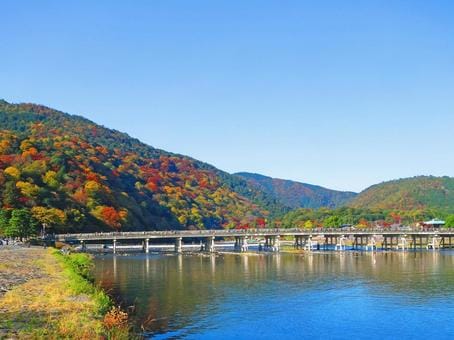
The Hankyu train is convenient for accessing Arashiyama. You can smoothly get to Arashiyama Station from both Osaka Umeda Station and Kyoto's Kawaramachi Station.
Upon arrival, it's lunchtime first. As Arashiyama is a popular tourist spot, restaurants get very crowded during lunch hours. I recommend having your meal as early as possible. Ideally, you should arrive in Arashiyama around 11:00 AM.
If you are interested in Arashiyama, check the article below! I summarized how and where you can enjoy Arashiyama as much as possible.
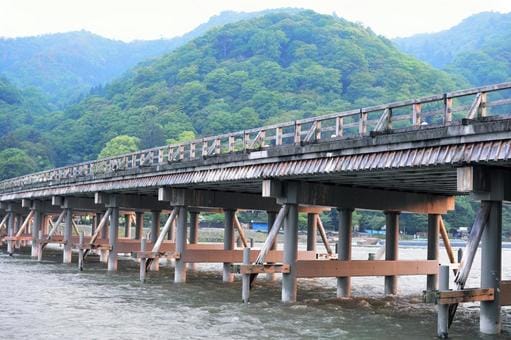
・Recommended Restaurant 1: Ryotei Rangetsu
This is a restaurant where you can casually enjoy the atmosphere of a ryotei (high-class Japanese restaurant) in the Arashiyama area. You can enjoy a luxurious lunch menu for 4,000-6,000 yen per person. I recommend making a reservation online in English.
<Store Information>
Address: 7 Sagatenryuji Susukinobabacho, Ukyo Ward, Kyoto 616-8385
Closed: Irregular
Phone: 075-865-2000
Hours: 11:30 AM–3:00 PM
Website: https://rangetsu.jp/
・Recommended Restaurant 2: Arashiyama Yoshimura
This is a restaurant where you can enjoy the traditional noodle dish "soba." No reservation is needed, and it's a restaurant with relatively short waiting times in Arashiyama, but it's very delicious, so I recommend it for a casual lunch.
<Store Information>
Address: 3 Sagatenryuji Susukinobabacho, Ukyo Ward, Kyoto 616-8385
Closed: None
Phone: 075-863-5700
Hours: 11:00 AM–5:00 PM
Website: https://yoshimura-gr.com/arashiyama/
Enjoy Tenryu-ji and the Bamboo Grove
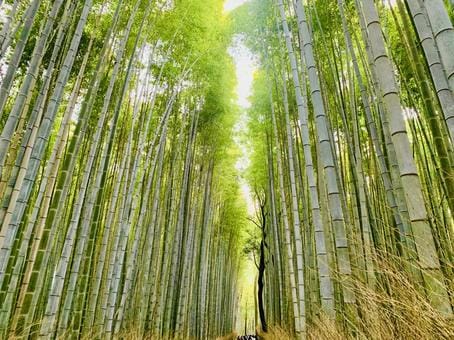
The highlight of Arashiyama sightseeing is "Tenryu-ji." It got its name "Tenryu-ji" (Heavenly Dragon Temple) from its impressive appearance reminiscent of a dragon's form. Its garden is also famous as a spot for autumn foliage in Kyoto.
After leaving Tenryu-ji, head to the "Bamboo Grove Path." Enjoy a leisurely stroll while listening to the sound of bamboo swaying in the wind.
Website: https://www.tenryuji.com/en/
Interact with Monkeys at Monkey Park
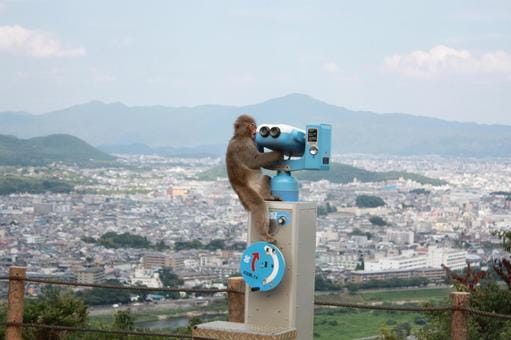
After enjoying the bamboo grove, cross Togetsukyo Bridge to "Arashiyama Monkey Park Iwatayama." About 120 wild Japanese macaques live in the park, and you can observe them up close.
During the monkey feeding experience, you can also learn about the ecology of Japanese macaques. Interacting with wild animals living in nature is sure to be a memorable part of your Kyoto trip.
The view of Arashiyama from the observation deck is also spectacular. You can look down on spots you've just visited, like Togetsukyo Bridge and the Bamboo Grove Path. Why not try taking a Kyoto-esque photo with your camera?
Website: http://www.monkeypark.jp/eng-index.html
To Gion at Night
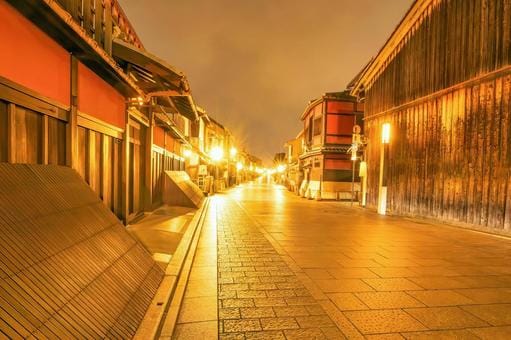
After enjoying Arashiyama, take the Hankyu train to Kawaramachi Station. You'll need to change trains at Katsura Station.
I recommend exploring Gion, Kyoto's geisha district, at night. Pontocho with its beautiful stone-paved streets is truly the quintessential scene of Kyoto.
Pontocho Website: https://www.ponto-chou.com/
If you are interested in Pontocho, check the article below! I summarized how and where you can enjoy Pontocho as much as possible.
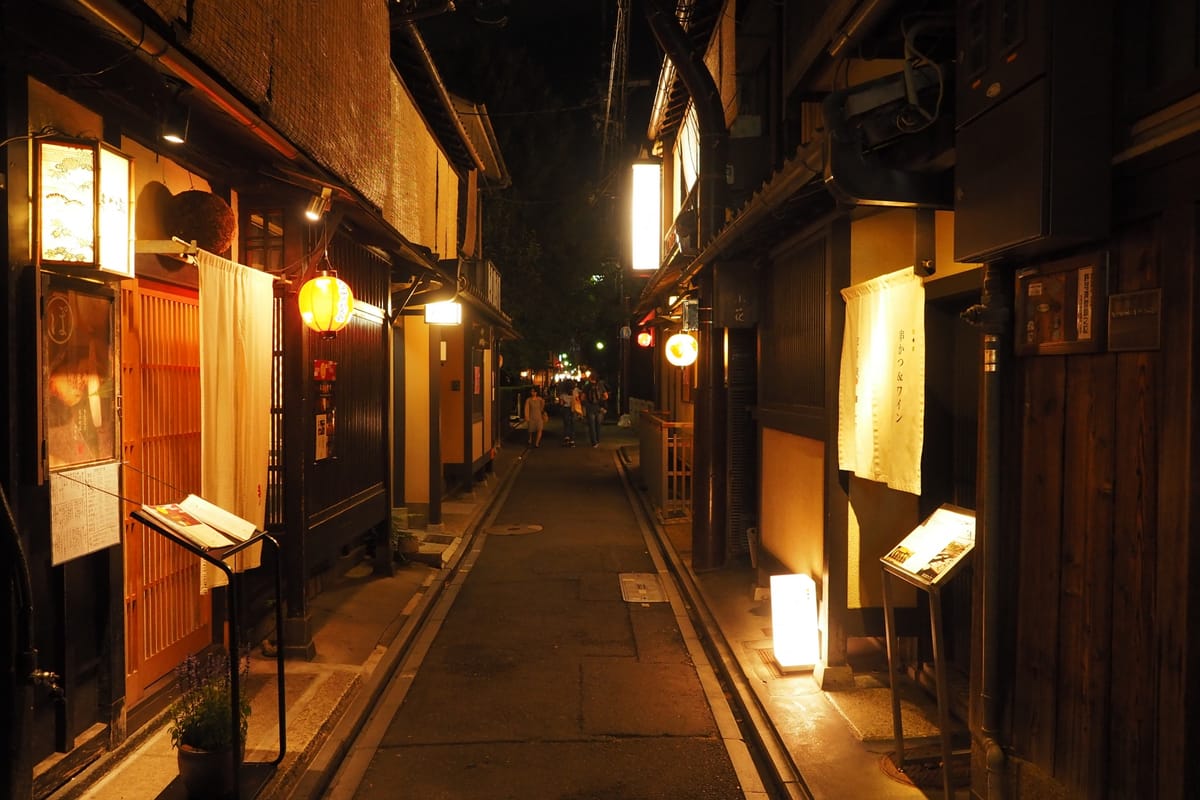
If you want to enjoy meals and shopping, I also recommend "Kyoto Kawaramachi Garden." It's a new spot where restaurants, cafes, and select shops are lined up. It's a spot where you can experience a slightly more modern atmosphere within Gion.
Kyoto Kawaramachi Garden Website:
https://www.kyoto-kawaramachigarden.com/en/
For those who prioritize gourmet experiences, I recommend our Magical Trip's "Kyoto Night Foodie Tour." It's a tour where you can eat your way through popular restaurants in the Gion area, and it's ranked 14th in TripAdvisor's world rankings.
Click here for more details: Kyoto Night Foodie Tour
Model Course 4: One Day Trip to Indulge in Kyoto's Tea and Food
Did you know that Kyoto is famous for its tea? In this last model course, you can fully enjoy Kyoto's tea and cuisine.
Course Overview
・Take Keihan train or JR to Uji Station → Nakamura Tokichi Honten → Byodoin → Itohkyuemon Uji Honten → Fushimi Inari Shrine → Nishiki Market → Gion Area → Your accommodation
・Duration: About 7 hours
・Transportation: Train, on foot
・Recommended season: All year round
When you think of Kyoto, tea and gourmet food come to mind. This model course takes you through Uji, which could be called the birthplace of these.
You'll conquer Kyoto souvenir staples like the long-established Kyoto tea shops "Nakamura Tokichi Honten" and "Itohkyuemon Uji Honten." We've also interwoven photogenic spots like Fushimi Inari Shrine and Nishiki Market.
As this course involves a lot of movement between areas, I recommend participating with comfortable walking shoes.
If you are interested in Uji, check the article below! I summarized how and where you can enjoy Uji as much as possible.
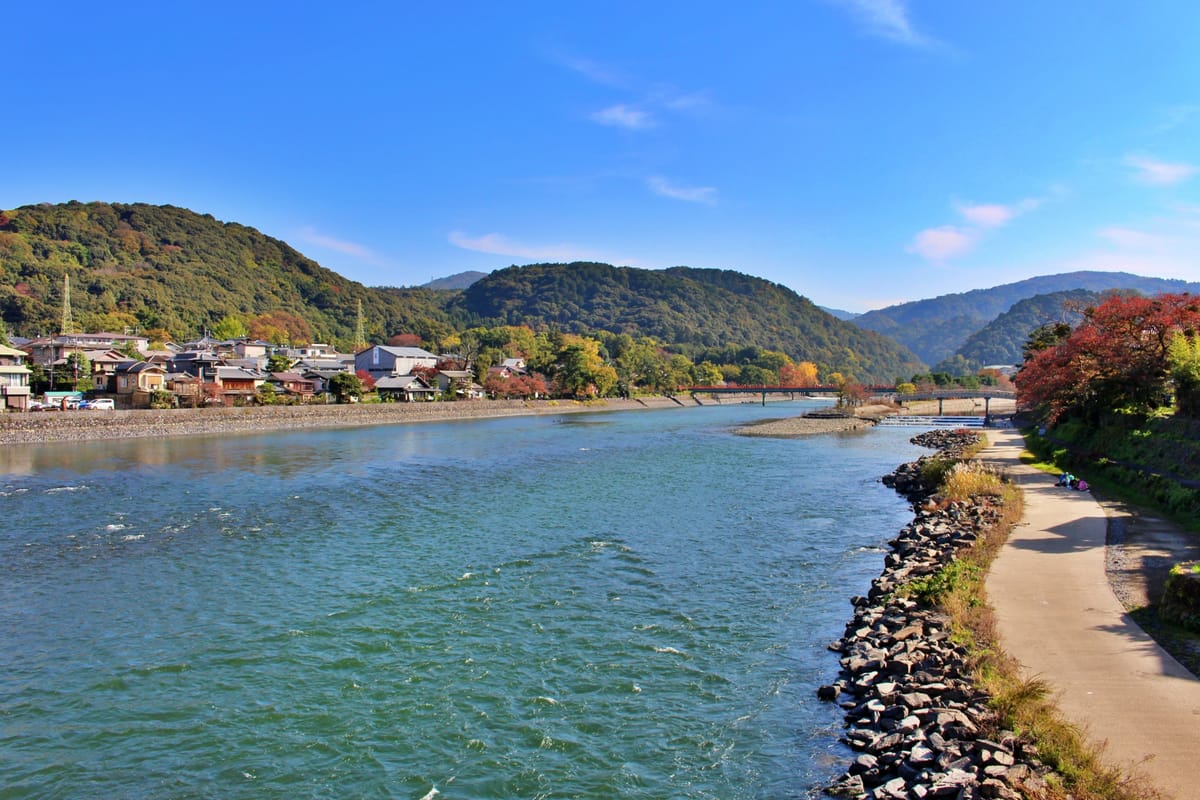
Course Details
Arrive at Uji Station and Enjoy Tea
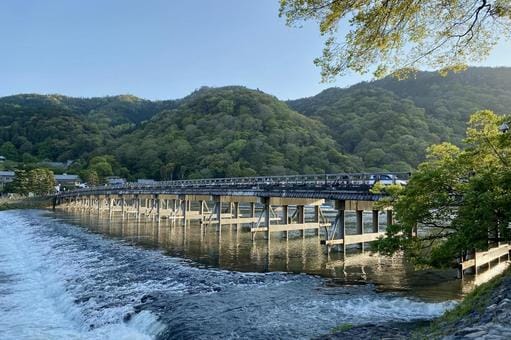
Aim to arrive at Uji Station, the terminal of the Keihan Uji Line, around 10:00 AM. It's also accessible from Kyoto Station via the JR Nara Line. Near the station is "Nakamura Tokichi Honten," a famous tea shop.
It's a prestigious tea shop with over 300 years of history.
Not only the tea but also the "Matcha Soft Serve" is exquisite. The harmony of rich Uji matcha flavor and smooth texture is a special treat you can only taste in Kyoto.
For tea, there are "light" and "strong" options, but I recommend strong if you're eating sweets, and light if you're just drinking tea.
<Store Information>
Address: Ichiban-10 Uji, Kyoto 611-0021
Closed: None
Phone: 077-422-7800
Hours: 10:00 AM–5:30 PM, 10:00 AM–4:00 PM(Wednesdays)
Website: https://global.tokichi.jp/
Visit Uji's Famous Spot, Byodoin
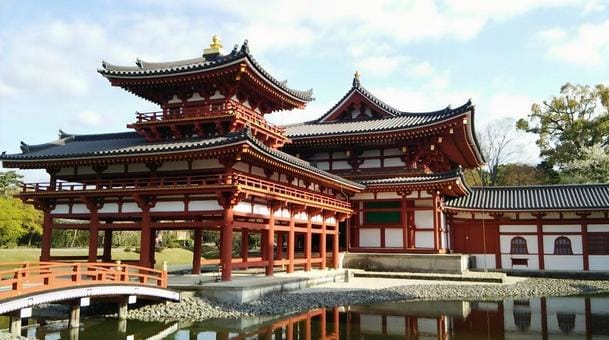
About a 10-minute walk from Nakamura Tokichi Honten is "Byodoin," a representative tourist spot in Uji known for its Phoenix Hall.
The view of Byodoin seemingly floating on the garden is particularly breathtaking. It's worth coming to Uji just to see this.
As it's also depicted on the Japanese 10-yen coin, if you have a coin on hand, try taking a photo with it together.
Website: https://www.byodoin.or.jp/en/
Matcha Soba Lunch
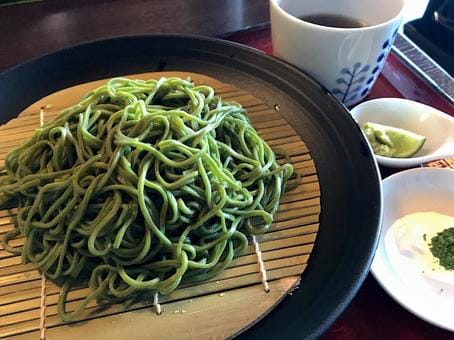
When you get hungry, head to "Itohkyuemon Uji Honten," located right next to Byodoin. It's a specialty store for matcha sweets and dishes run by a long-established tea shop representative of Kyoto.
Here, I highly recommend trying the "Matcha Soba." It's firm soba noodles with Uji matcha kneaded into the dough. The combination with the rich matcha broth is excellent, offering a taste unique to Uji.
For dessert, there's a lineup of classic matcha sweets like "Uji Matcha Parfait" and "Matcha Roll Cake." While you might be at a loss choosing what to eat, that's part of the fun. I hope you find your favorite item.
<Store Information>
Address: 19-3 Aramaki, Todo, Uji, Kyoto 611-0013
Closed: None
Phone: 077-423-3955
Hours: 10:00 AM–6:00 PM
Website: https://www.itohkyuemon.co.jp/corporate/shop/uji/sabo/
Stop by the Photogenic Fushimi Inari Shrine
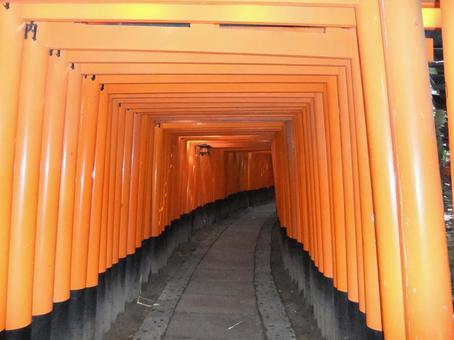
In the afternoon, head to Fushimi Inari Shrine. It's only about a 30-minute ride on the Keihan train from Uji to Fushimi Inari Station.
Fushimi Inari Shrine, known for its impressive thousands of vermilion torii gates, is known as the deity of prosperous business. As you pass through the torii gates, you might want to pray for business success. I remember visiting to pray before my job hunting activities when I was a student.
Fushimi Inari Shrine is also very popular as an Instagram-worthy spot. I, too, took many photos with the "Senbon Torii" (thousand torii gates) as a backdrop. Why not explore for photogenic scenery with your camera in hand?
Website: https://inari.jp/en/
Tour Nishiki Market and Enjoy Food Hopping

"Nishiki Market," known as Kyoto's kitchen, is truly a paradise for food lovers. Fresh fish, vegetables, and side dishes are cramped together, offering Kyoto's seasonal flavors.
I recommend the Fuka manjuu. The "nama-fu" (fresh wheat gluten) manjuu is quintessentially Kyoto, and at about 200 yen per piece, it's perfect as a walking snack.
Website: http://www.fuka-kyoto.jp/
Also, don't miss the "Yaki-pon" from "Kyo Tanba." It's a simple sweet made with chestnuts. You can enjoy the purchased products with tea in the store. Why not casually experience Kyoto's traditional tea culture?
Website: https://kyotanba.co.jp/
If you want to fully enjoy Nishiki Market, check out the following tour from Magical Trip.
Click here for more details: Nishiki Market Brunch Walking Food Tour
If you are interested in Nishiki Market, check the article below! I summarized how and where you can enjoy Nishiki Market as much as possible.
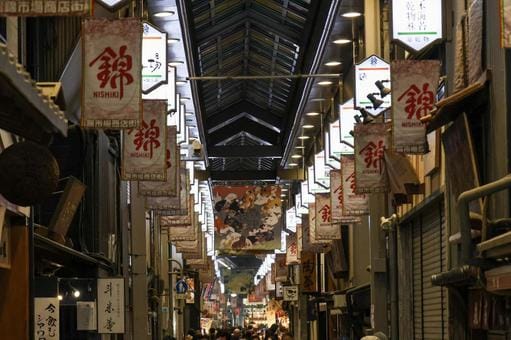
Stroll Through the Gion Area at Night
Finally, wrap up your day in "Gion," Kyoto's premier entertainment district. Pontocho and Kiyamachi-dori are lined with restaurants with a uniquely Kyoto atmosphere.
Enjoy dinner and shopping in Pontocho and Kyoto Kawaramachi Garden, which I introduced in Model Course 3.
Pontocho Website: https://www.ponto-chou.com/
Kyoto Kawaramachi Garden Website:
https://www.kyoto-kawaramachigarden.com/en/
If you are interested in Gion, check the article below! I summarized how and where you can enjoy Gion as much as possible.

Other Places You Can Visit on a Day Trip from Kyoto City
Kyoto is also an area with excellent access to nearby regions. Here, I'll introduce places that weren't included in the model courses but are accessible on a day trip from central Kyoto.
Nara
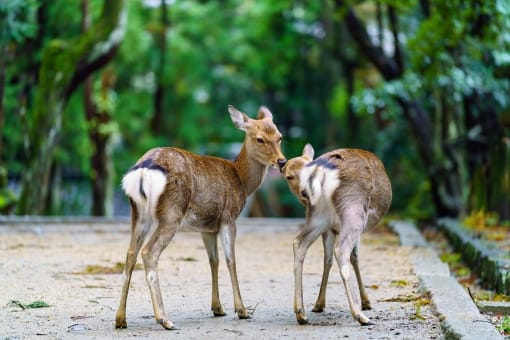
Nara, located close to Kyoto, is a popular day trip destination where you can enjoy both history and nature. It's a venerable town where the capital was located in the 8th century, and it's a treasure trove of historical buildings including Todaiji Temple and Kasuga Shrine Shrine.
In particular, interacting with deer in Nara Park is a unique Nara experience. Feeding the deer is sure to captivate both children and adults alike.
It takes about 35 minutes from Kyoto Station to Nara by Kintetsu train. While I recommend spending a full day to leisurely tour around, you can sufficiently enjoy the highlights even in just the morning.
Recommended Access Method
It takes about 35 minutes from Kyoto Station to Kintetsu Nara Station on the Kintetsu Kyoto Line. As Kintetsu Nara Station is the nearest station to Todaiji Temple and Nara Park, I highly recommend using this route for access.
Osaka
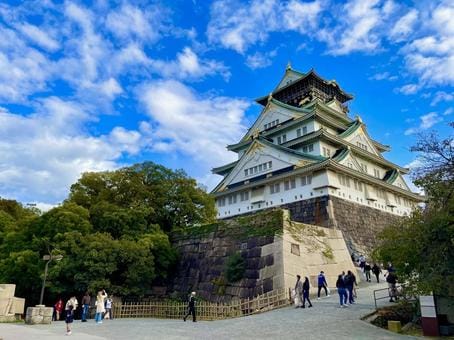
Osaka is a big city with a charm different from Kyoto. Famous as a city of culinary delights, you can indulge in Osaka gourmet foods like takoyaki and kushikatsu.
As for tourist spots, there are plenty of attractions that blend history and modernity, such as Osaka Castle and Dotonbori. There are also popular theme parks like Universal Studios Japan, so you might not be able to cover everything in one day.
Access from Kyoto is convenient using JR or Hankyu trains. Both take about 30 minutes to reach central Osaka. I hope you enjoy the lively atmosphere that's different from Kyoto.
Recommended Access Method
・About 30 minutes from Kyoto Station to Osaka Station by JR Special Rapid Service
・About 40 minutes from Hankyu Kawaramachi Station to Osaka Umeda Station
Osaka Station and Umeda Station are in the same area. Once you get there, you can easily move to famous spots by subway or JR.
Mount Hiei
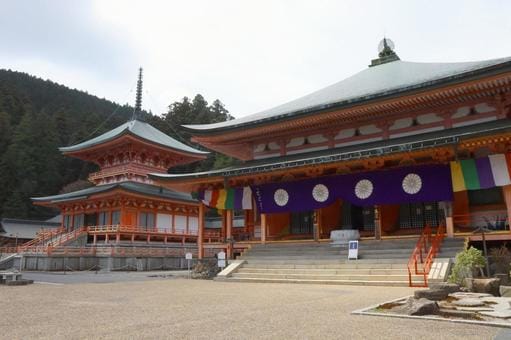
Mount Hiei is a popular hiking spot located a short distance from central Kyoto. At the summit, about 800 meters above sea level, there's a group of venerable temples centered around Enryaku-ji Temple.
Walking along the mountain path while enjoying the rich nature and the solemn appearance of the temples - it's truly a Kyoto-like experience.
Using the ropeway and cable car, you can reach the summit in about 30 minutes. The grand panorama of Lake Biwa spread out below is a recommended view spot, aided by its good accessibility.
Recommended Access Method
・Take the Eizan Electric Railway from Demachiyanagi Station to Yase-Hieizanguchi Station (about 30 minutes), then access Mount Hiei summit by cable car.
Amanohashidate
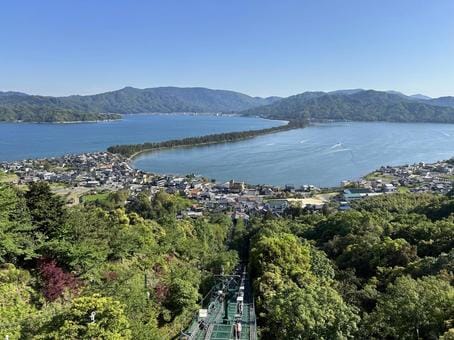
"Amanohashidate," one of Japan's three scenic views, is a scenic spot in Miyazu City in northern Kyoto Prefecture. The sandbar stretching for about 3.6 kilometers looks like a bridge leading to heaven.
Amanohashidate, which I visited during summer vacation in my student days, is still etched in my heart.
It takes about 2 hours by express train from Kyoto Station to "Amanohashidate Station," the gateway to Tango. You can sufficiently enjoy it on a day trip.
Recommended Access Method
・About 2 hours and 10 minutes from JR Kyoto Station to Amanohashidate Station by limited express "Hashidate"
If you're staying in Kyoto for a few days to a week, I recommend going on a nice weather day.
Lake Biwa
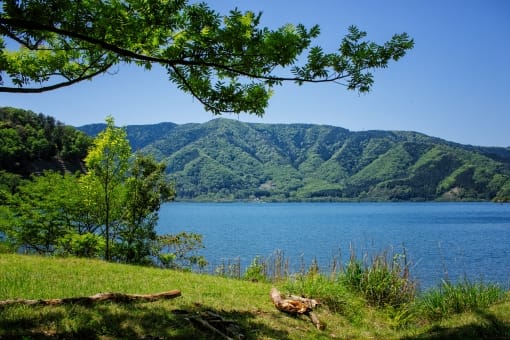
Lake Biwa is Japan's largest lake located in Shiga Prefecture. It takes about 20 minutes by train from central Kyoto to reach the lakeside resort area.
My recommendation is cycling. It's an exceptional experience to ride leisurely along the lakeshore while listening to the chirping of water birds. Anyone can easily enjoy Lake Biwa by using rental bicycles.
Recommended Access Method
・About 10 minutes from Kyoto Station to Otsu Station on JR Biwako Line
・About 25 minutes from Sanjo Station to Ishiyama Station on Keihan Railway
Recommended Tours to Fully Enjoy Kyoto
Kyoto, a popular tourist destination, offers many tours that allow you to experience its charm more deeply.
Not only can you efficiently visit famous places with advance reservations, but you can also stop by hidden spots known only to locals. If you go around while listening to the guide's explanations, you're sure to deepen your understanding of Kyoto's history and culture.
Here, I'll introduce some recommended tours, including those from our company, Magical Trip.
Tours to Feel Kyoto's History
"Fushimi Inari Hidden Hiking Tour" by Magical Trip
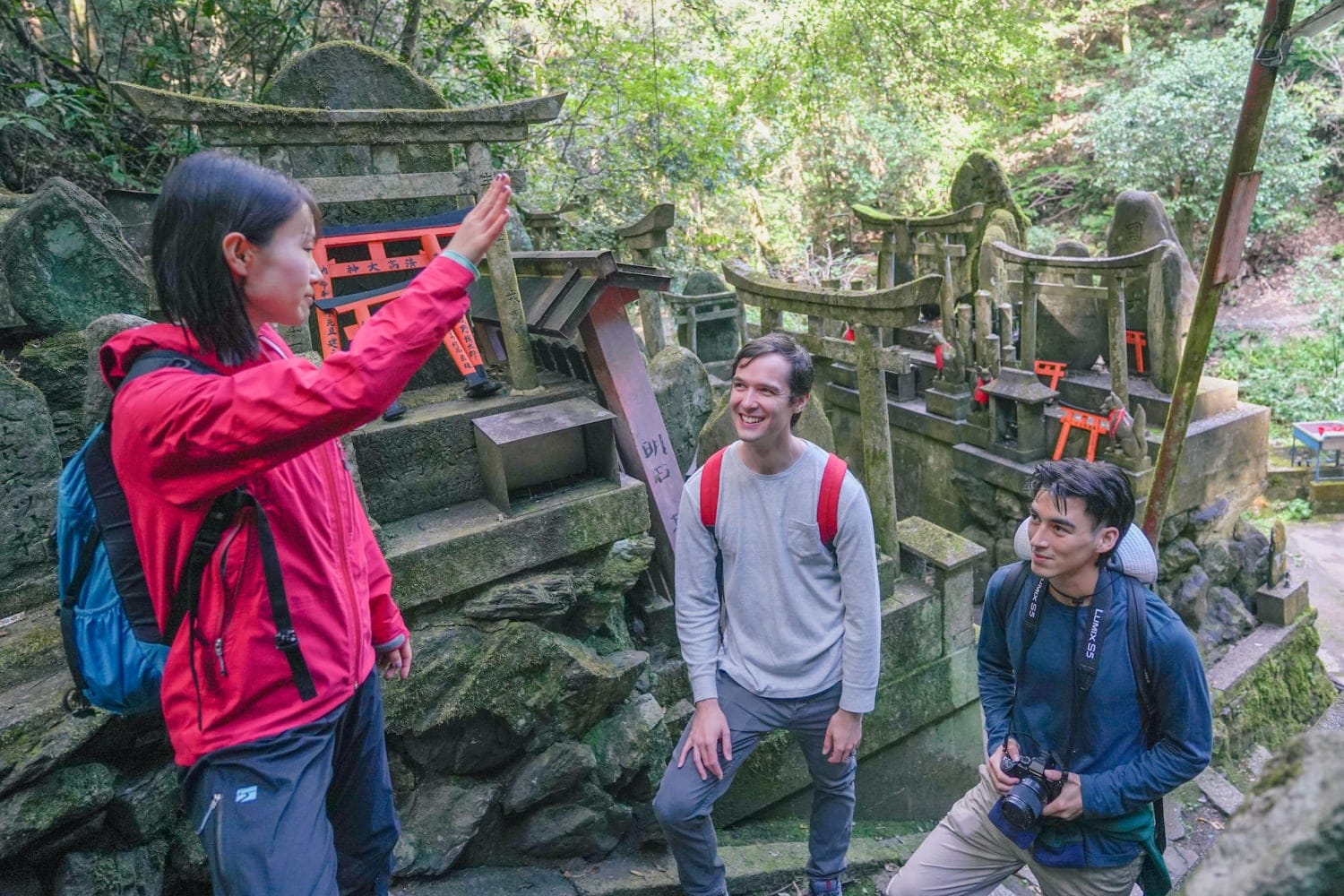
The "Fushimi Inari Hidden Hiking Tour" proudly ranks 3rd in TripAdvisor's Japan experience rankings. You can explore hidden hiking routes known only to locals with a guide.
You'll thoroughly tour Fushimi Inari Shrine for 3 hours, allowing you to discover unknown charms beyond the thousand torii gates. You'll also be taught many hidden photo spots. The fee is about 58 USD per person.
Click here for more details: Fushimi Inari Hidden Hiking Tour
"10 Must-see Spots in Kyoto One Day Private Tour" by EE tour
Source: Viator
This is a tour for repeat visitors who want to conquer all the main spots like Kinkaku-ji, Arashiyama, and Gion! You'll take a grand tour of Kyoto for 8 hours. The charm is that you can move efficiently using taxis for intermediate transportation.
While it's recommended for those who want to visit many famous places, note that taxi fares and other expenses are not included. The fee is 317 USD for up to 3 people, with prices increasing for larger groups.
Click here for more details: 10 Must-see Spots in Kyoto One Day Private Tour
"Kyoto Arashiyama Bamboo Forest & Garden Half-Day Walking Tour" by Magical Trip
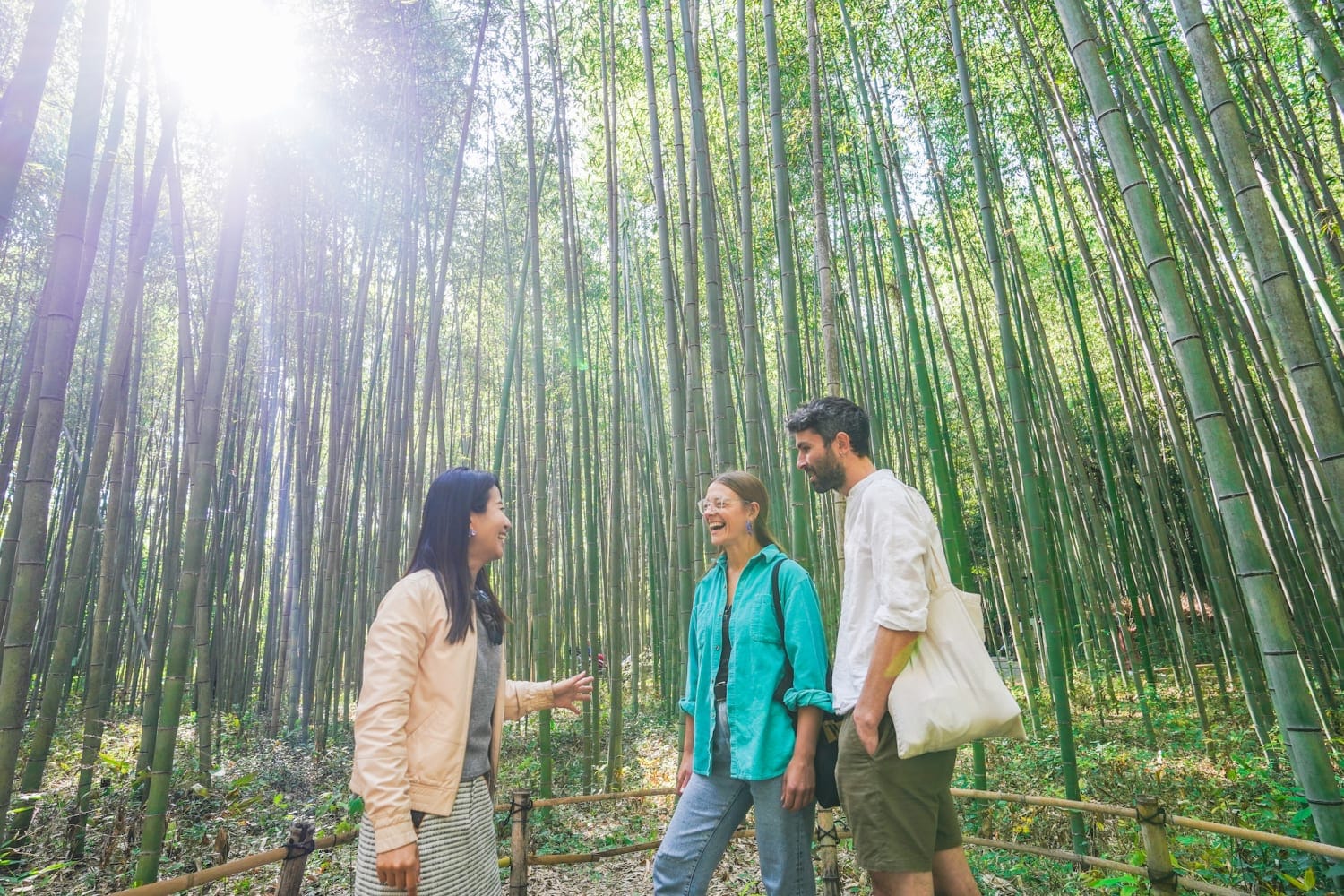
I recommend this tour if you want to efficiently tour Arashiyama. You'll visit famous spots in Arashiyama like the Bamboo Grove Path and Tenryu-ji over 5 hours. It's a fulfilling tour where you can enjoy Kyoto gourmet food while savoring Arashiyama's nature. The fee is about 105 USD per person, including lunch.
Click here for more details: Kyoto Arashiyama Bamboo Forest & Garden Half-Day Walking Tour
Tours to Indulge in Kyoto's Food
"Kyoto Night Foodie Tour" by Magical Trip
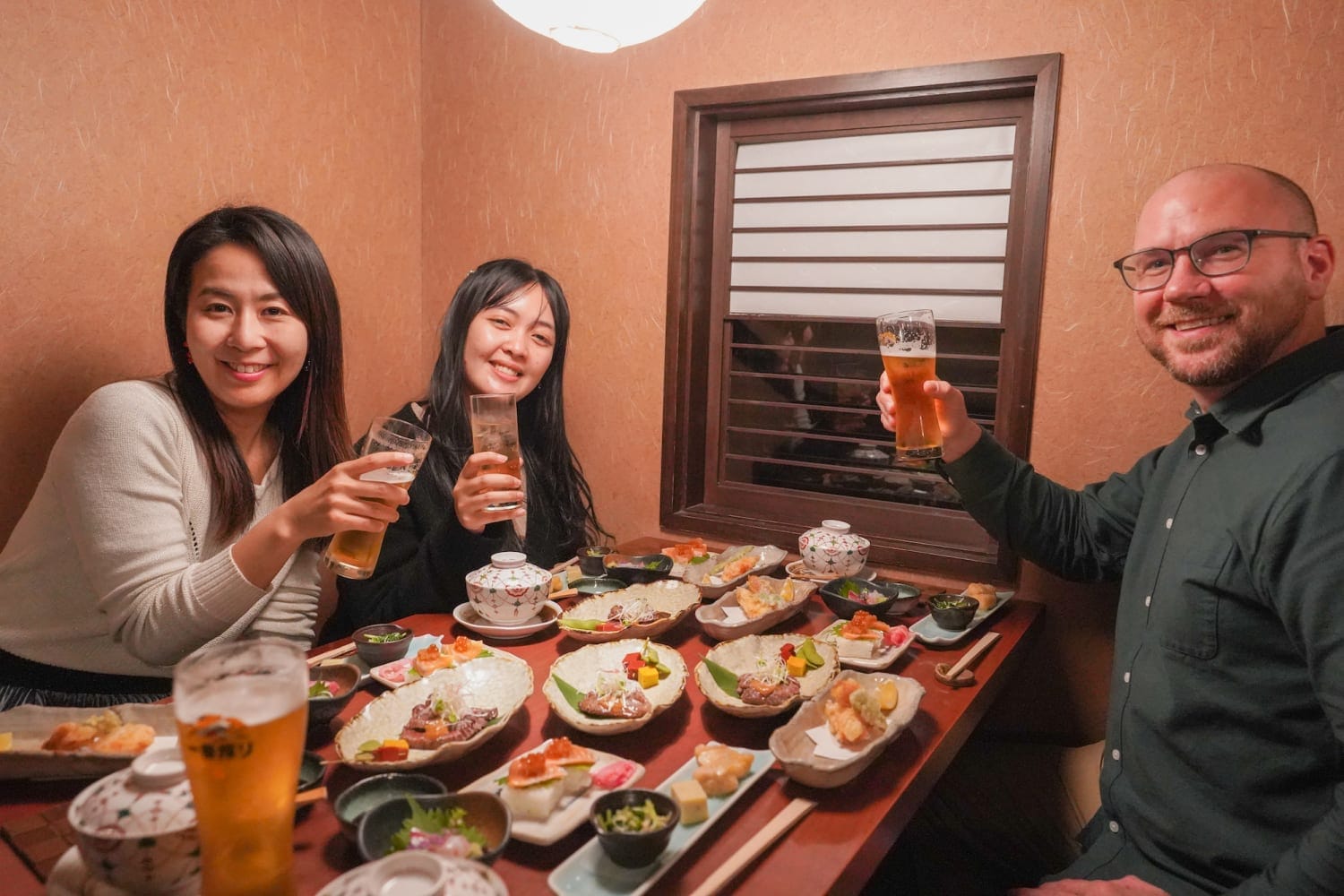
If you want to experience Kyoto's food culture, this tour is a must. It's a popular food tour ranked 14th in TripAdvisor's world rankings, where you can eat your way through the Gion area.
It's nice that you're taken to restaurants that are difficult for foreigners to enter. You can thoroughly enjoy the flavors of Kyoto. The fee is about 133 USD per person, including food costs.
Click here for more details: Kyoto Night Foodie Tour
"Nishiki Market Brunch Walking Food Tour" by Magical Trip
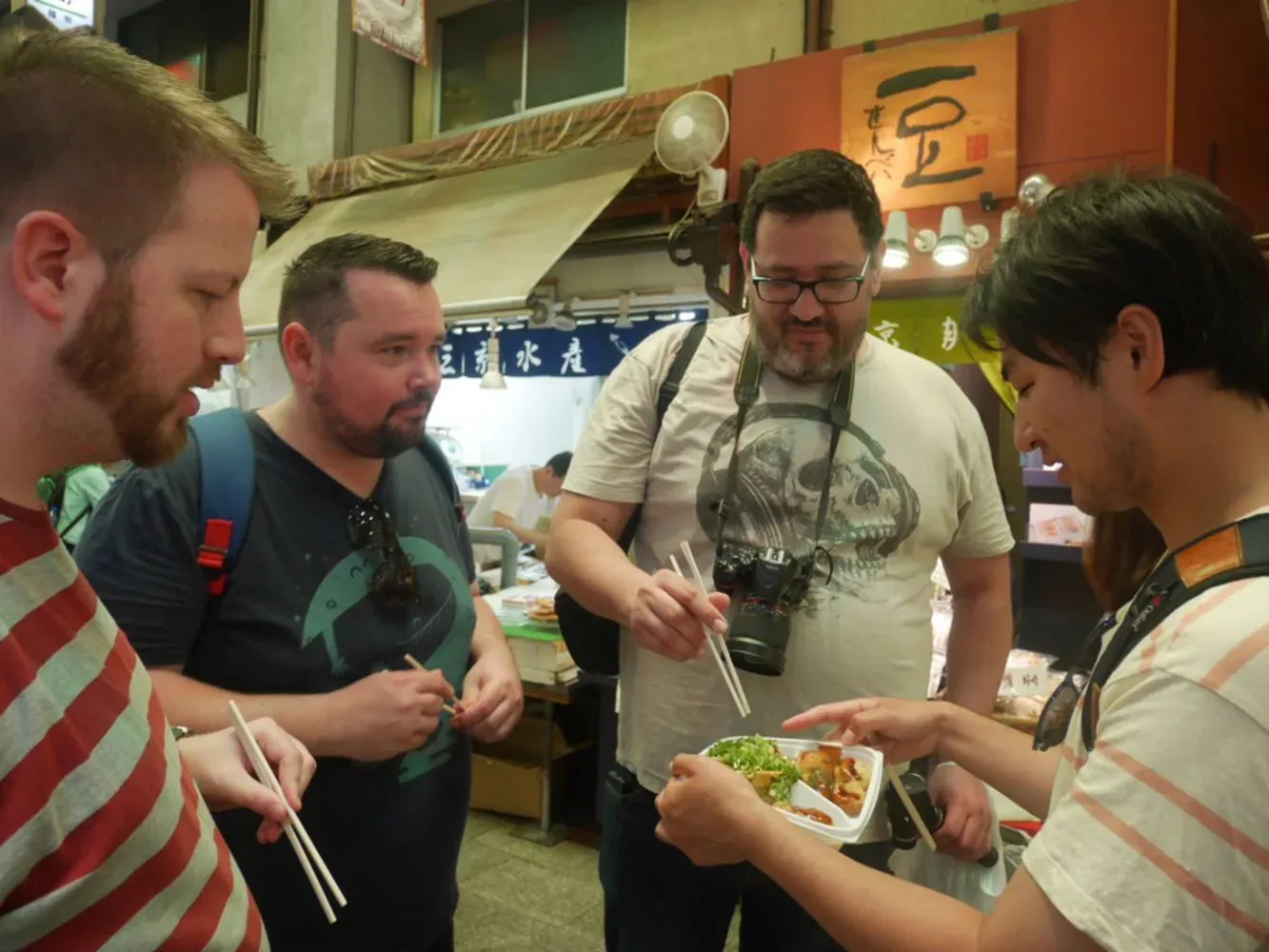
I recommend this tour if you want to fully enjoy Nishiki Market in the morning. You'll enjoy Kyoto's kitchen for 3 hours. You'll also get to explore the Gion area along the way.
While savoring the market's famous delicacies, you'll experience flavors loved by locals. It's recommended for casually experiencing Kyoto's food culture, as it includes a volume-packed brunch for about 45 USD.
Click here for more details: Nishiki Market Brunch Walking Food Tour
The memories you experience during your Kyoto tour are sure to become lifelong treasures. I hope you fully savor the charms of this ancient capital that Japan is proud of. For me too, Kyoto is like a second hometown. Every time I visit, there are new discoveries, and it cleanses my heart.
With its atmospheric townscape and delicious cuisine, rich nature and venerable history, Kyoto, which has it all, is truly Japan's treasure. Once you visit, you're sure to be captivated.
But Kyoto's charm isn't just about the good old things. New cultures continue to be born even now. That might be the true essence of Kyoto, which has continued to shine for over a thousand years.
I hope you find your own way of enjoying Kyoto. As someone who holds a top-level Kyoto certification, I'll quietly support you.


